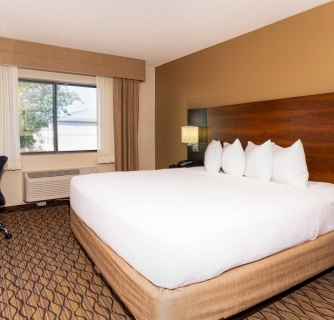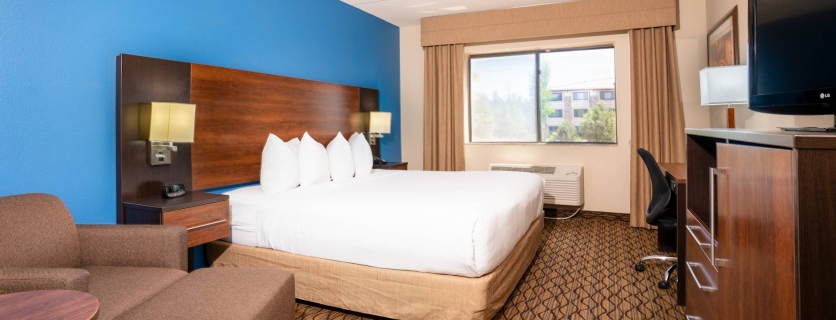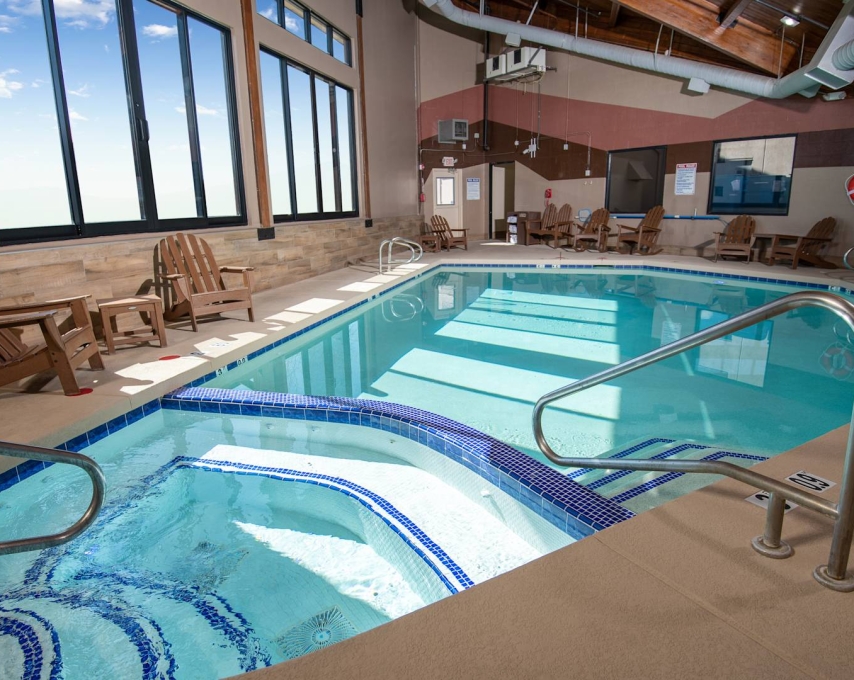Xanterra Travel Collection® Acquires Grand Canyon Hotel & Suites
Denver, CO — June 30, 2025 — Xanterra Travel Collection®, the leading provider of unforgettable experiences in national parks and iconic destinations, announces the acquisition of a 197-room hotel property in Tusayan, Arizona. Just a mile from the South Rim entrance to Grand Canyon National Park, Grand Canyon Hotel & Suites is poised to become the ultimate year-round basecamp for travelers seeking comfort, convenience, and adventure.
Located directly across the street from Xanterra’s current property, The Grand Hotel, the newly acquired hotel was formerly operated as a Holiday Inn Express and will be immediately rebranded as Grand Canyon Hotel & Suites.
“We are excited to grow our footprint in Tusayan and continue our long-standing commitment to exceptional hospitality in and around Grand Canyon National Park,” said Andrew Heltzel, Chief Commercial Officer at Xanterra Travel Collection®. “Grand Canyon Hotel & Suites enhances our ability to serve travelers of all kinds with high-quality accommodations just minutes from the park’s South Rim.”
A Gateway to Grand Adventures
The Grand Canyon Hotel & Suites offers 197 spacious guest rooms and suites, ideal for families, solo travelers, and group adventurers alike.
The hotel features:
- Complimentary continental breakfast to fuel guests’ daily explorations of the national park and beyond
- A heated indoor pool and hot tub for year-round relaxation
- Well-appointed rooms with air conditioning, satellite TV, high-speed internet, in-room refrigerators, microwaves, and coffee makers
A Lasting Legacy
As part of Xanterra’s Grand Canyon portfolio, which includes The Grand Hotel, the Grand Canyon Railway & Hotel, and historic lodges along the canyon rim, the Grand Canyon Hotel & Suites strengthens the company’s role as a steward of exceptional experiences in one of the world’s most spectacular landscapes.
Xanterra has been a trusted presence at Grand Canyon National Park for over a century, dating back to before the park’s official designation in 1919. With this latest acquisition, Xanterra reaffirms its commitment to sustainable tourism and authentic national park hospitality.




About Xanterra Travel Collection®
Known for its “Legendary Hospitality with a Softer Footprint,®” Xanterra Travel Collection® provides A World of Unforgettable Experiences® through its operations in national parks, including lodges, restaurants, tours, and activities, as well as through its ownership of resorts, a cruise line, a railway, and tour companies. Xanterra has operations in Grand Canyon, Yellowstone, Glacier, and Rocky Mountain National Parks, and Mount Rushmore National Memorial. Xanterra Travel Collection® also owns and operates Grand Canyon Railway & Hotel in Williams, Ariz., The Grand Hotel in Tusayan, Ariz., The Oasis at Death Valley in Death Valley Calif., Windstar Cruises, Holiday Vacations, VBT Bicycling Vacations, and Country Walkers. Xanterra is also affiliated with two Forbes Five-Star Resorts, The Broadmoor in Colorado Springs, CO and Sea Island on the coast of Georgia.

